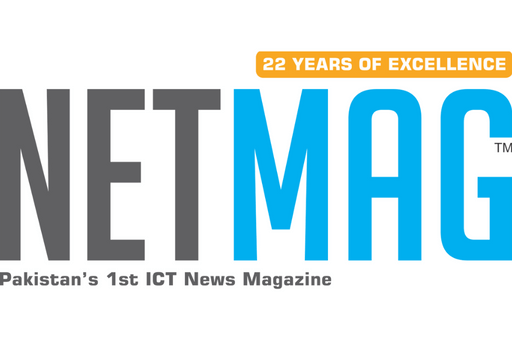Rehan, a young software engineer in Karachi, embodies the paradox of Pakistan’s relationship with artificial intelligence. Like many, his daily life is seamlessly interwoven with AI-powered technologies, from TikTok’s personalized feed to Careem’s optimized ride-hailing service. Yet, for the majority of Pakistanis, AI remains an abstract concept, disconnected from everyday realities and absent from national discourse. This disconnect poses a significant threat, as the world rapidly embraces AI as a transformative force, leaving Pakistan perilously close to being left behind.
Across the globe, nations are strategically integrating AI into their economies and societies. India is leveraging AI for agricultural forecasting and educational enhancement. China is constructing AI-centric smart cities and spearheading global AI research and patent filings. Even Bangladesh, under its Vision 2041 plan, is actively cultivating a workforce skilled in AI, robotics, and data science.
Pakistan, a nation brimming with youthful potential, a burgeoning freelance economy, and a surprisingly high rate of tech adoption, finds itself at a critical juncture. The absence of a national AI policy, a lack of AI education at the foundational school level, and insufficient governmental investment in this crucial domain paint a concerning picture. While isolated initiatives flicker within universities and private training centers, a cohesive national strategy with a sense of urgency is conspicuously missing. The risk is not merely technological obsolescence but a potential lockout from the future’s economic and social advancements.
The Global AI Landscape: A Race for Supremacy
The sheer scale of global investment in artificial intelligence underscores its perceived importance. In 2024 alone, private AI investment reached a staggering $252 billion. The United States emerged as the frontrunner, injecting $109 billion, a remarkable 160% increase from the previous year, as highlighted in Stanford’s 2025 AI Index Report. This surge signifies a global recognition of AI as the next industrial revolution, permeating economic policies, military strategies, and corporate operations. The report further indicates that over 78% of companies worldwide now utilize at least one AI tool, a substantial rise from 55% in 2021.
Generative AI, the engine behind transformative tools like ChatGPT and Midjourney, witnessed an explosive investment surge, exceeding $33.9 billion in 2024 – a tenfold increase compared to 2020. These advanced models are now demonstrating human-level or even superhuman performance in diverse cognitive tasks, rapidly reshaping industries from journalism to product design. Simultaneously, the cost of deploying AI models has plummeted by 280 times since 2020, paving the way for even wider adoption, primarily in nations with the requisite infrastructure and talent.
China has firmly established itself as a dominant force in the AI arena, leading in AI patents (nearly 70% of the global total) and producing the most AI research globally. The nation’s strategic 2030 vision aims for global AI superpower status, supported by government-funded research institutions and AI-powered urban developments.
India is rapidly ascending in the global AI landscape, fueled by its $1.25 billion IndiaAI mission. This initiative focuses on leveraging AI to enhance healthcare, agriculture, and digital services across over 22 local languages. The Stanford report commends India’s proactive approach to AI skills development, policy formulation, and public-private partnerships.
Even Bangladesh is strategically integrating AI into its long-term digital agenda, prioritizing upskilling initiatives and the modernization of government services.
In stark contrast, Pakistan finds no mention in the key metrics of the 2025 AI Index Report – no significant investment figures, no presence in education benchmarks, and no notable contribution to global research metrics. As its neighbors accelerate their AI endeavors, Pakistan risks being completely marginalized in this transformative race.
Pakistan’s Current AI Landscape: Glimmers Amidst a Policy Vacuum
While the global AI powerhouses forge ahead, Pakistan grapples with defining its initial steps. A cohesive national AI strategy and substantial public investment are conspicuously absent. Existing AI adoption is fragmented, driven by isolated initiatives rather than a coordinated national vision.
Healthcare: Pakistan’s public health sector largely operates on traditional systems. However, private sector startups like Sehat Kahani and xpertFlow are pioneering AI-driven telehealth triage, while some hospital chains are experimenting with AI-assisted imaging for disease detection. This contrasts sharply with nations like China and the US, which have years of experience in utilizing AI for cancer detection and diagnostic acceleration. Scaling these pilot projects in Pakistan remains a distant aspiration.
Education: AI integration in Pakistani classrooms is still a rarity. Platforms like the Sabaq Foundation and Noon Academy Pakistan employ basic AI for lesson personalization. Private training initiatives such as Saylani Welfare Trust and PIAIC are equipping young individuals with digital skills in AI and related fields. Alarmingly, AI and computer science are still not part of the national K-12 curriculum as of 2025, placing Pakistan significantly behind India and several African nations that have already embedded technology into their core education systems. These valuable initiatives operate independently of the state, highlighting the lack of a unified national approach.
READ MORE: Searching for the Best Cryptos to Invest in for 2025?
Logistics: The logistics sector presents a nascent area of AI adoption, with companies like Bykea, InDrive, Careem, and TCS utilizing machine learning for delivery prediction, route optimization, and customer support enhancement. While these private-sector innovations are crucial, Pakistan lacks the large-scale, AI-enabled infrastructure seen in countries like China, such as intelligent traffic management systems and city-wide mobility upgrades.
E-commerce: This sector provides one of the most tangible examples of AI application in Pakistan. Daraz, a prominent online marketplace, has integrated advanced AI and machine learning across its operations. This includes AI-powered product recommendations, fraud detection, personalized search results, and inventory management. Daraz’s personalization engines consider diverse factors like age, gender, income, and regional preferences, significantly boosting user engagement and conversion rates. Their AI-powered Seller Center offers multilingual support and real-time agent monitoring, empowering over 240,000 sellers. This stands as a significant instance of AI directly impacting economic empowerment and SME growth in Pakistan.
Finance, Agriculture, and Manufacturing: These critical sectors have barely begun to explore the potential of AI. AI chatbots could revolutionize customer service in banking, while precision farming tools could dramatically increase agricultural yields. However, without substantial backing and a national strategy, these remain unrealized possibilities.
The Policy and Investment Deficit: The fundamental challenge lies in the absence of a cohesive national AI strategy. Unlike India’s $1.25 billion IndiaAI Mission or China’s massive $47.5 billion semiconductor fund, Pakistan has not allocated significant public funds for AI-specific infrastructure, research, or talent development. While draft AI policies have been proposed by the Ministry of IT & Telecom, none have been officially implemented or funded. This starkly contrasts with India’s dedicated AI research parks and national language AI tools, and China’s deployment of AI in public health and industrial automation. Pakistan also lacks crucial foundational digital infrastructure, including a national AI supercomputing cluster, widespread cloud accessibility, and comprehensive data governance and AI ethics frameworks. This policy vacuum and lack of investment contribute to a brain drain, as trained Pakistani AI talent often seeks opportunities in better-funded ecosystems abroad. Pakistan’s current fragmented and reactive approach to AI risks it becoming a mere consumer in a race where its peers are actively shaping the future.
The Critical Education Gap: The slow integration of AI into Pakistan’s education system is particularly alarming. While some universities offer AI degrees and private bootcamps provide valuable training, the broader educational landscape reveals a significant deficit in preparing the next generation for an AI-driven world. The 2025 AI Index Report indicates that nearly two-thirds of countries globally now offer AI or computer science education at the school level. India, through its National Education Policy 2020, introduces coding from Grade 6. China has embedded AI into its middle and high school curricula, supported by specialized teacher training and state-sponsored learning platforms. Even resource-constrained nations like Rwanda and Kenya recognize digital literacy as a fundamental necessity. In Pakistan, computer science often remains an optional subject in public schools, with no AI content in the national curriculum, no standardized teacher training in AI, and no cohesive plan for integrating these skills into mainstream education. Many government schools lack basic infrastructure like reliable electricity and internet access, further hindering progress. This educational lag is not just a missed opportunity but a structural failure to equip Pakistani youth for the future.
At the higher education level, institutions like NUST, FAST-NUCES, GIKI, COMSATS, and ITU Lahore have introduced AI-focused coursework and research labs. However, as Professor Dr. Yasar Ayaz, Chairman of the National Center of Artificial Intelligence (NCAI), points out, this progress is largely confined to urban centers and lacks a cohesive national strategy linking academia with government and industry. The absence of a national AI research council to align priorities and funding further exacerbates this fragmentation, limiting the real-world impact of local research.
Faced with institutional inertia, Pakistan’s resourceful youth are creating their own pathways into the AI domain. Initiatives like the Saylani Welfare Trust’s Mass IT Training Program and PIAIC offer free or accessible training in AI and related technologies. Women-focused programs like CodeGirls and Standard Chartered Women In Tech Pakistan are working to bridge the gender gap in tech education. While these efforts are transformative, their reliance on volunteerism and donor funding limits their scale and sustainability. Dr. Ayaz emphasizes the urgent need to scale these programs to underserved communities to democratize access to AI education nationwide.
Encouragingly, the NCAI has developed a 10-year AI roadmap aligned with the government’s URAAN Pakistan digital transformation vision, targeting twelve key sectors for AI application. Initiatives like the AI Nexus Bootcamp and collaborations like the AIDP course with the University of Bologna aim to build a multi-tiered AI talent pipeline. However, the success of this roadmap hinges on concrete government commitment, including the formal adoption of national AI policies, the integration of AI education into public schools, dedicated funding for infrastructure and localized content, and a serious dialogue on Responsible AI ethics and governance. Without these crucial steps, Pakistan risks squandering its potential and falling further behind.
Regional Dynamics: A Growing Divide
A comparison with Pakistan’s regional neighbors underscores the urgency of the situation. China is a global AI leader, driven by its comprehensive national strategy and massive investments. India is rapidly advancing, with a clear national AI mission and proactive integration of AI into education and public services. Even Bangladesh and Sri Lanka are making strides in specific AI applications relevant to their national development goals.
Dr. Ayaz notes a potential opportunity for Pakistan through collaborations with China under the Belt and Road Initiative, allowing for the export of AI technologies. However, capitalizing on these opportunities requires parallel investments in local talent and infrastructure. The stark contrast with the proactive and well-funded AI strategies of its neighbors suggests that Pakistan risks being not just behind but increasingly isolated in the region’s AI-driven future.
The Steep Cost of Inaction:
Pakistan’s hesitant embrace of AI carries significant and far-reaching consequences. Economically, the failure to adopt AI at scale will further erode the competitiveness of its industries in global supply chains, as AI-powered automation and decision-making drive productivity gains elsewhere. The job market faces a potential crisis as AI transforms the nature of work, leaving a largely unprepared workforce vulnerable to unemployment. Moreover, the lack of AI-driven solutions in governance hinders the potential for smarter public services, particularly in areas critical to Pakistan like climate change resilience and food security. Finally, the absence of a regulatory framework for AI leaves the nation vulnerable to the growing threats of misinformation, deepfakes, and AI-enabled fraud. The cost of inaction is not merely stagnation but a potential descent into economic irrelevance and social instability.
A Call to Action: Seizing the Opportunity
Pakistan still possesses the potential to bridge the AI gap, but decisive and immediate action is paramount. The first crucial step is a clear national acknowledgment of AI as a strategic priority. This must translate into a comprehensive and actionable AI policy, spearheaded by the Ministry of IT & Telecom, with clearly defined goals, allocated budgets, and accountability mechanisms. This policy should establish a national framework encompassing ethical AI considerations, open data initiatives, infrastructure development, and cross-sectoral adoption strategies.
Secondly, Pakistan must prioritize the integration of AI and digital literacy into its core education curriculum, extending beyond elite institutions to reach every government school. A foundational AI curriculum for grades 6-12, coupled with effective teacher training and accessible offline resources for areas with limited internet connectivity, is essential to cultivate a future-ready workforce.
Thirdly, the establishment of a national AI innovation fund is critical to support local startups, researchers, and university-led projects. Public-private partnerships can foster the development of localized AI solutions in Urdu and regional languages, addressing specific national challenges and empowering local communities.
Most importantly, Pakistan must actively engage its youth, conveying that they are integral to this AI-driven future. A focused national effort to train a million young people in AI and related fields within the next five years is achievable, given the existing talent and ambition. What is urgently needed is clear direction and strategic investment.
The NCAI’s development of a 10-year AI roadmap, aligned with the URAAN Pakistan vision, provides a crucial foundation. However, as Dr. Ayaz emphasizes, the swift adoption of legislative frameworks for AI ethics, data governance, and cybersecurity is now paramount to build public trust, attract investment, and secure Pakistan’s position as a responsible AI nation.
The time for deliberation has passed. Pakistan stands at a crossroads. It can either passively witness the future unfold, further entrenching existing inequalities and limiting its global competitiveness, or it can proactively shape its destiny by embracing artificial intelligence as a cornerstone of national growth and empowering its youth to become creators, not just consumers, in the global AI game. The urgency of this moment cannot be overstated; the future will not wait for those who hesitate.




